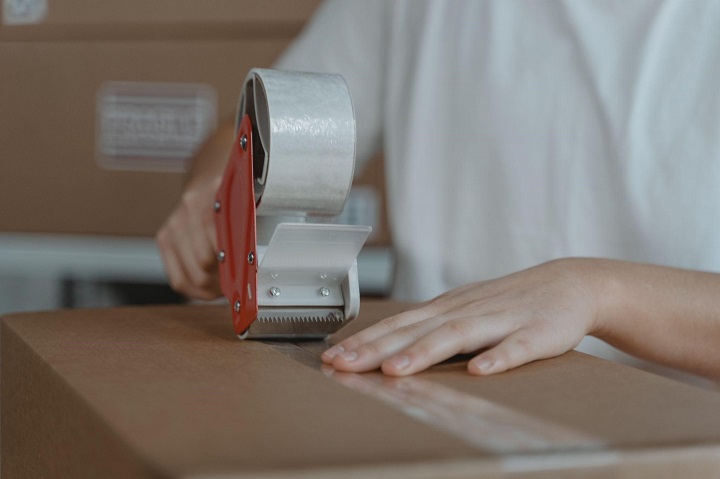Safe packaging isn’t just an industrial requirement but a daily necessity for billions of consumers around the globe. We use all sorts of packaging to safeguard our products, especially for transporting them from one place to another.
However, no matter how advanced packaging technology we see today, protecting edible or inedible products has been practiced for thousands of years. But as product delivery became more vital from personal to industrial requirements, many experiments, accidents, and developments took place that made safe packaging an interesting topic for all.
This article contains eleven amazing facts about safe packaging you never knew before. So, learn more in the following.
1. How It Became ‘Duct Tape’
The safety tape for secure packaging and delivery of products is mainly known as duct tape. There are other reliable and heavy-duty packaging tapes in the market, but duct tape has marked a significant chapter of US military history.
During the war, duck tape was introduced to replace the use of wax to seal ammunition packages, so soldiers could instantly rip off the box in times of absolute crisis.
Moreover, it was initially named ‘duck tape’ by the soldiers since its water-repelling quality resembled the back of the ducks where water could slide over.
2. Microwave-Proof Packaging
Did you know that you could heat your snacks while it’s still packed? Yes, some food companies worldwide have implemented cutting-edge technology to bring this weird idea to life.
Now, you can microwave your packaged snacks and foods like noodles, rice, meat, seafood, etc., without worrying about them melting in the temperature. Usually, polypropylene (PP) packaging ensures such endurance of heat while making it easy for the consumer to freeze and heat the foods whenever they want.
3. Water Bottle Expiration Date
We all know about the expiration dates on food packaging. Clearly, the expiration date indicates that the food inside the packaging is no longer edible. However, the same doesn’t apply to water bottles.
Manufacturers of drinking water emboss expiration dates on water bottles apart from ensuring safe cappings and labels.
But the expiration date on the bottles doesn’t tell you the degradation or expiration of water. Instead, they indicate the expiration date of the manufactured bottles themselves.
4. Centurion Cardboard Boxes
Cardboard boxes or corrugated boxes are older than a hundred years. It might have become the staple product for industrial shipping. However, its utility was invented in the mid-nineteenth century.
Although the cardboard shipping box was legally patented in 1903, the cardboard product itself was patented in 1856.
5. Safe Packaging for Farming Products
Although you might associate cardboard boxes with online shopping and industrial shipping the most, their utility lies with the products that are agriculturally produced.
In fact, in the US, cardboard boxes are mostly used in transporting farm goods and products to the local stores of numerous cities and counties.
6. A Package That Withers with Its Product
If you didn’t know, this is one of the most bizarre product packaging for protecting its content while, at the same time, saving the environment from wastage.
Tomorrow Machine, a Swedish company, has introduced an absolutely organic packaging tech made of water and seaweed gel from agar-agar to sell various fruit juices. This special packaging protects what’s inside and withers with every sip you take from the content. By the end of your consumption, there’s nothing left for the transparent package at all— it simply vanishes!
7. Paperboard Boxes by a Factory Accident
It’s unbelievable, but paperboard boxes were invented by accident in a New York factory where a worker. The worker set the machine wrong, which cut through the boxes instead of creasing them. This made the factory owner realize that it’s possible to cut and tuck the boxes simultaneously.
The result was mass production of paperboard boxes throughout the country, paving the way for the packaging of cereal, crackers, and other foods and snacks.
8. Germ-Proof Cardboard Boxes
Actually, cardboard boxes are carefully manufactured in the factory, where they go through a process of shaping and bonding under the heat of up to 200 degrees Fahrenheit. This ensures the proper sanitization process, which most other packaging can’t ensure.
Moreover, since the cardboard boxes are usable only once and thrown away after use, they’re sustainably recyclable. This makes them safer than reusable boxes or packaging that potentially spreads germs and bacteria.
9. Thoughtful Packaging Sells More Products
It’s not just the products consumers long for; it’s the packaging itself that may lure them into buying the same products over and over again in comparison to similar products in the market. Thoughtful product packaging does matter.
According to researchers, consumers love to see instructions, colorful logos, marketing slogans, etc., on the packaging, which makes them loyal and retentive customers for a long time.
This applies to all luxury products like perfume, sanitary items, cosmetics, watches, goggles, etc. However, the same goes for daily grocery items, medicines, and snacks.
10. Sense of Trust, Feel-Good, and Reputation
The majority of the world’s customers love to carry their daily necessities in cardboard boxes. Those brown, light to heavy packaging is one the best ways to maintain the product quality and shape, depending on what type of items you’re buying or transporting.
Today, you can pack almost anything, from home appliances and edible foods to industrial products and tech gadgets, in cardboard and paperboard boxes for safe transportation. At the same time, you can track delivery packages from the comfort of your home.
Cardboard or paperboard packaging not only ensures safety but induces a sense of good feeling and acceptability among the vast consumer groups worldwide.
11. More Hygienic and Safer for Food Products
Did you know that corrugated cardboard packaging lessens the chances of bacterial contamination in food items?
As per research, corrugated cardboard boxes or trays keep the fruits fresher and more hygienic than plastic or any other packaging.
It’s because corrugated cardboard boxes don’t transfer germs or bacteria to the products inside while keeping any food items safe for extended periods.
To End with
What makes safe packaging a fantastic topic is its versatile designs, manufacturing aspects, acceptability, marketing gimmicks, utilities, and more.
As more upgraded packaging arrives in the market every other day, you’ll realize how the packaging process has wrapped today’s business with its elements of ensuring safety, hygiene, and quality of goods and products.
So, if you think our list of ten amazing, safe packaging facts has intrigued you, share it with others.




































